Ask Ethan: How fast can you reach the speed of light?
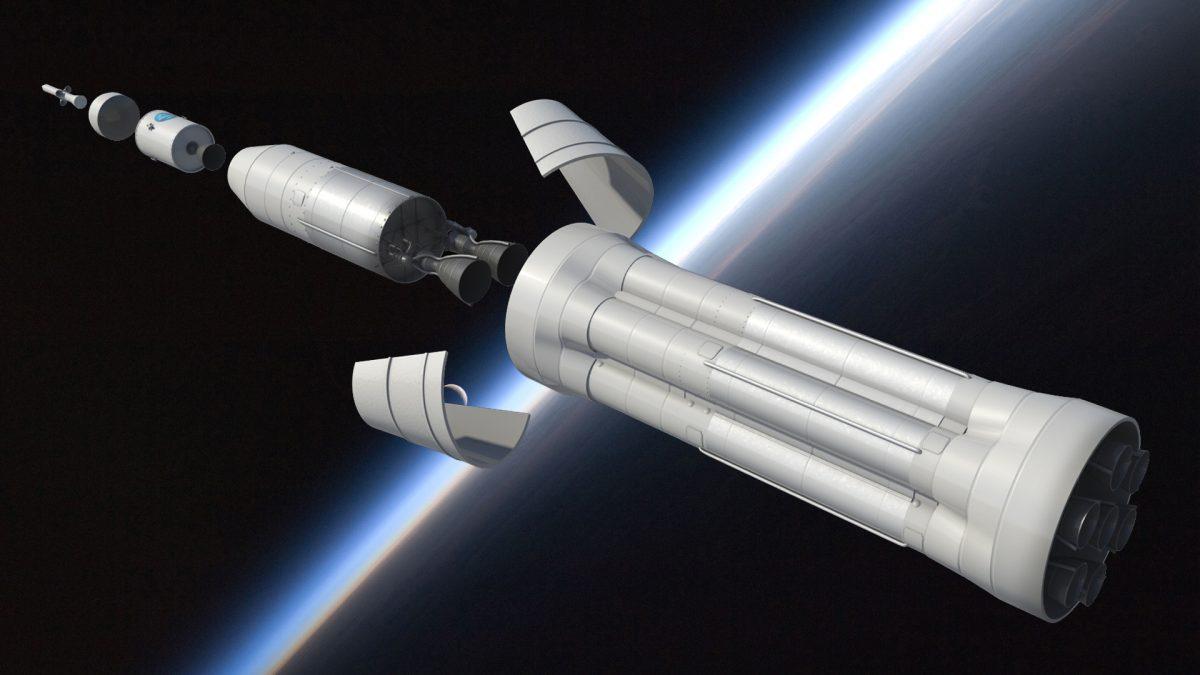
To achieve speeds close to the speed of light, a multi-stage rocket would have to discard some of its mass as speed increases, as the Super Haas rocket shown here does
Suppose you want to go on an interstellar journey and get to your destination as quickly as possible. You may not be able to do this until tomorrow, but if you had all the necessary tools and technologies, as well as some help from Einstein's relativity, could you get there in a year? What about getting closer to the speed of light? This is what our reader asks his question this week:
I recently read a book, the author of which tried to explain the paradox of the twins, introducing a spacecraft flying for 20 years with an acceleration of 1 g and then returning back. Is it possible to maintain such acceleration for such a time? If, let's say, start the journey on the first day of the new year and fly with an acceleration of 9.8 meters per second per second, then, according to calculations, by the end of the year you can reach the speed of light. How then to accelerate further?
To travel to the stars is absolutely necessary to maintain such acceleration.
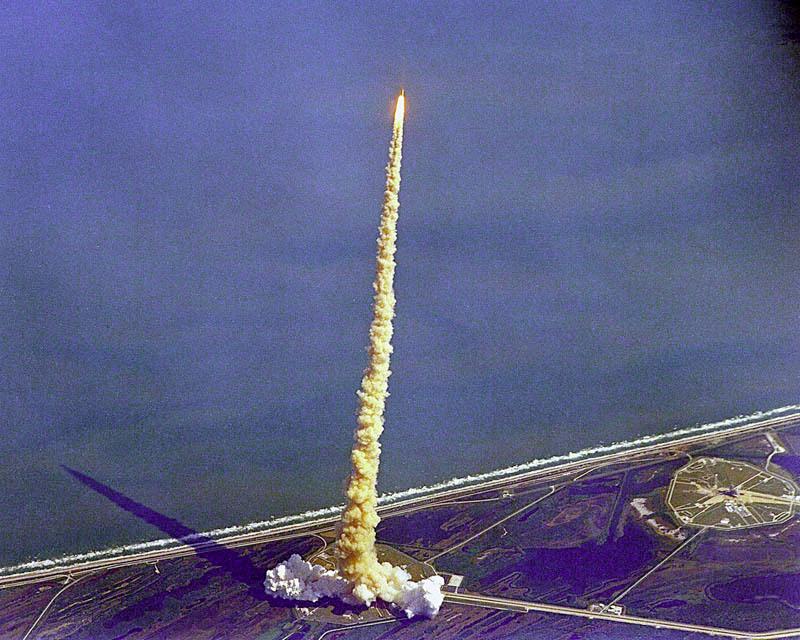
This launch of the Columbia spacecraft in 1992 shows that the rocket does not accelerate instantaneously — acceleration takes a long time.
The most advanced missiles and jet propulsion systems created by mankind are not powerful enough for such a task, because they achieve not so much acceleration. They are impressive because they accelerate a huge mass for quite a long time. But the acceleration of such rockets as Saturn-5, Atlas, Falcon and Soyuz does not exceed the acceleration of a sports car: from 1 to 2 g, where g is 9.8 meters per second squared. What is the difference between a rocket and a sports car? The car reaches its limit in 9 seconds, at around 320 km / h. A rocket can accelerate so much longer — not seconds or minutes, but a quarter of an hour.
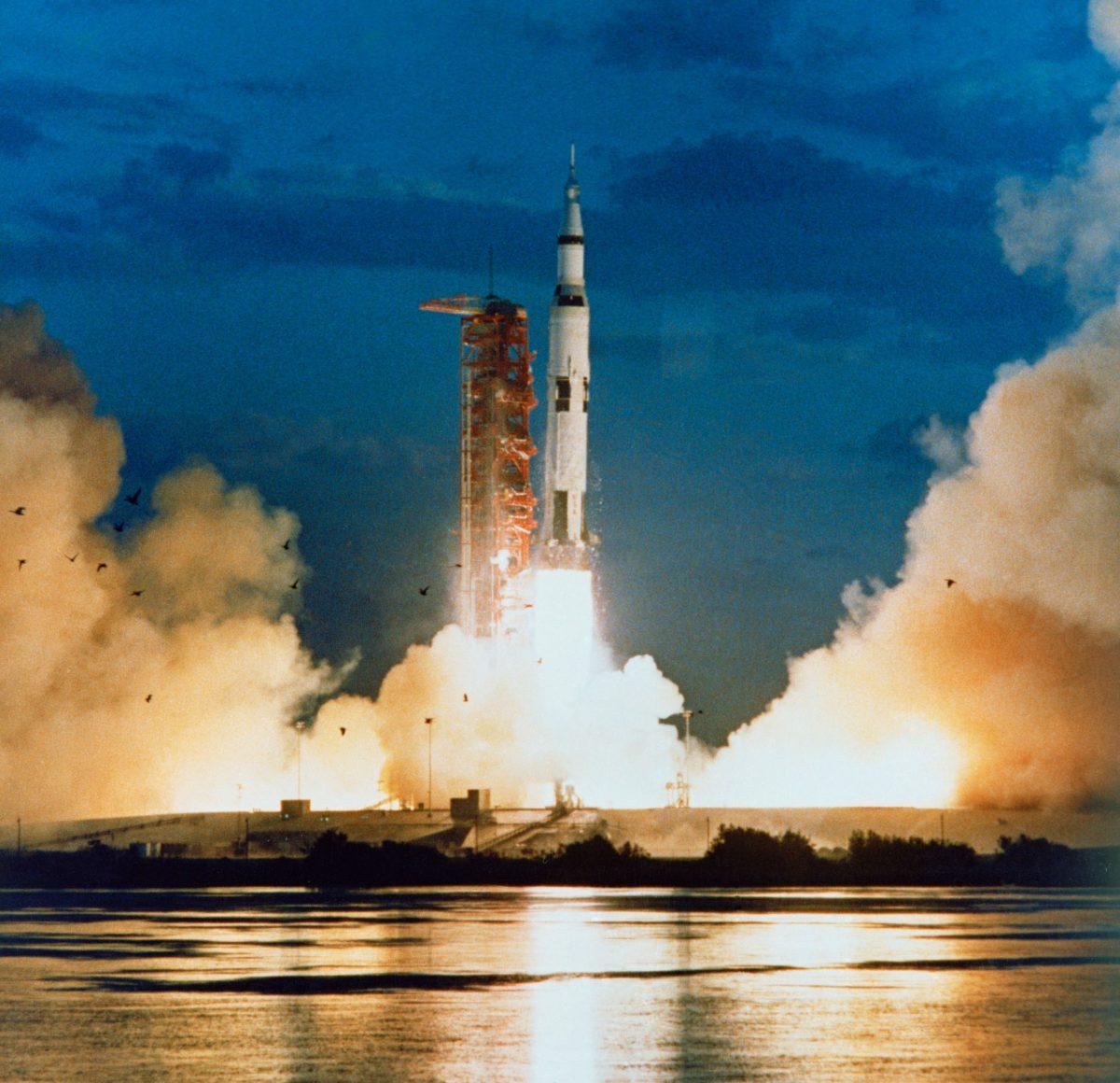
The very first NASA launched the Apollo-4 rocket from the Kennedy Cape space center. Although it accelerated just like a sports car, its key to success was its continued support for this acceleration.
This is how we can overcome the gravitational pull of the Earth and go into orbit, reach other worlds in our Solar System, or even break free from solar attraction. But at some point we will reach the limit - it is possible to accelerate for a limited time due to restrictions on the amount of carried fuel. The rocket fuel we use is unfortunately extremely inefficient. You have seen the famous Einstein equation, E = mc 2 , describing mass as a form of energy, and that energy can be stored as matter. Our great rocket fuel is terribly inefficient.
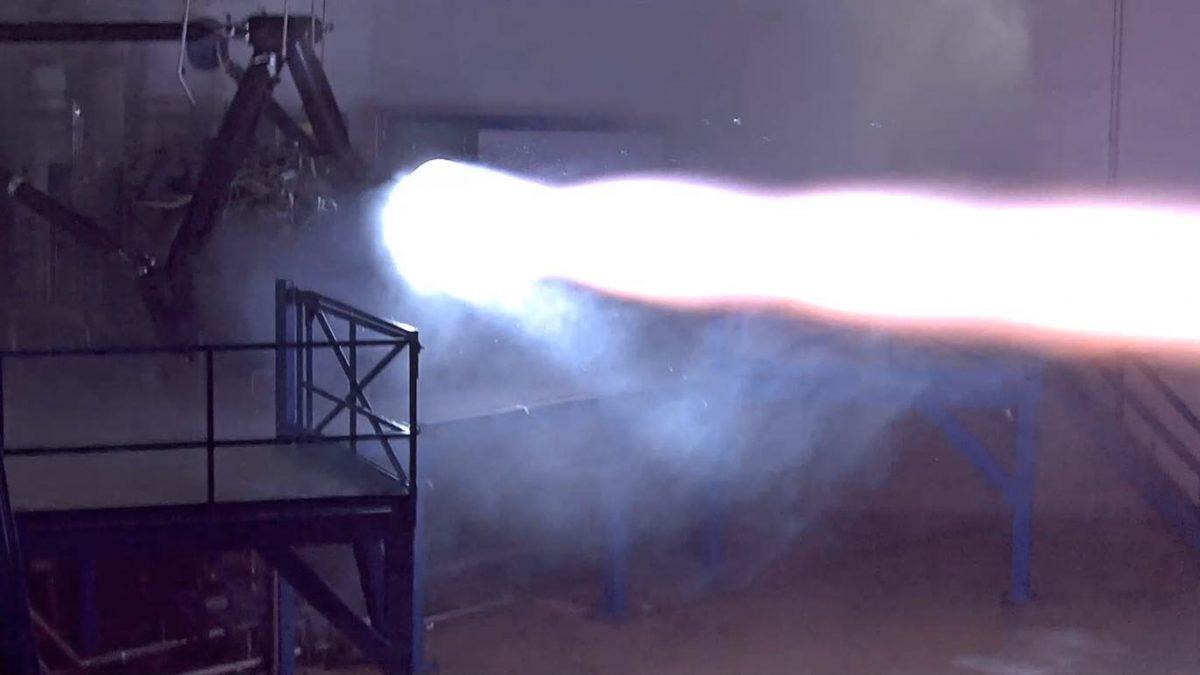
The first trial launch of the SpaceX Raptor engine in early 2016
Using chemical reactions, the fuel converts no more than 0.001% of its mass into energy, severely limiting the maximum speed available to the spacecraft. And that is why a launching rocket weighing 500 tons is required to launch 5 tons of payload into a geostationary orbit. Nuclear missiles would be more efficient, and would convert about 0.5% of their mass into energy, but the ideal result would be fuel from matter and antimatter, reaching 100% efficiency in turning E = mc 2 . If you had a rocket of a certain mass, no matter what, and only 5% of this mass would be contained in antimatter (and another 5% - in disposable matter), you could control the annihilation over time. As a result, you would get a steady and steady acceleration of 1 g over a much longer period of time than any other fuel would give you.

Representation of the artist on the reactive system of motion using antimatter. The annihilation of matter / antimatter gives the highest density of physical energy of all known substances.
If you need constant acceleration, the matter / antimatter annihilation, which is a few percent of the total mass, will allow you to accelerate at this speed for several months in a row. In this way, you can gain up to 40% of the speed of light, if you spend the entire annual budget of the United States to create antimatter, and will accelerate 100 kg of payload. If you need to accelerate even longer, you need to increase the amount of fuel taken with you. And the more you accelerate, the closer you will be to the speed of light, the more you will notice relativistic effects.
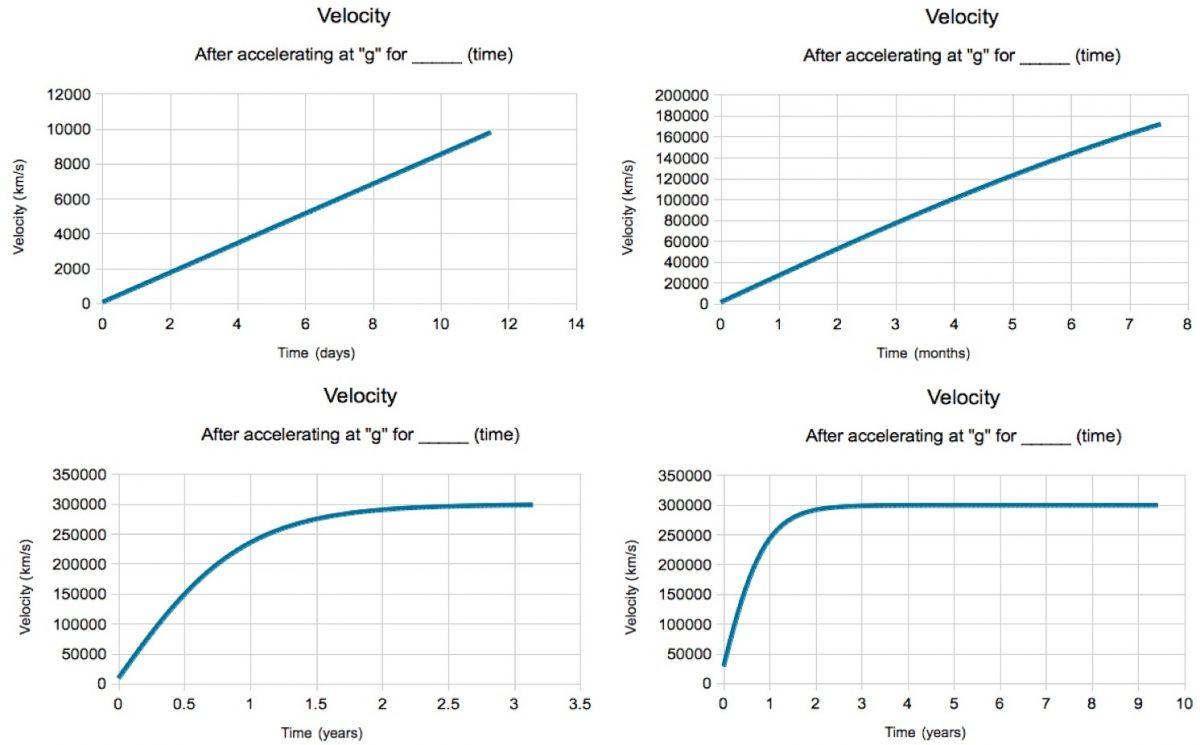
As your speed increases with time, if you keep accelerating 1 g for a few days, months, years or a decade
After ten days of flight with an acceleration of 1 g, you will have passed Neptune, the last planet of the solar system. After a few months, you will begin to notice a slowing down of time and a shortening of distances. In a year you will have 80% of the speed of light; in 2 years you will get to 98% of the speed of light; after 5 years of flight with an acceleration of 1 g, you will move at a speed of 99.99% of the speed of light. And the longer you accelerate, the closer you get to the speed of light. But you will never reach it. Moreover, over time it will take more and more energy.

On a logarithmic scale, you can see that the longer you accelerate, the closer you get to the speed of light, but you never reach it. Even after 10 years you will get to 99.9999999% of the speed of light, but you will not reach it.
The first ten minutes of acceleration will require a certain amount of energy, and by the end of this period you will move at a speed of 6 km / s. In another 10 minutes you will double the speed to 12 km / s, but it will take three times more energy. In another ten minutes you will be moving at a speed of 18 km / s, but this will take 5 times more energy than in the first ten minutes. This scheme will continue to work further. In a year you will be using 100,000 times more energy than at the beginning! In addition, the speed will increase less and less.

Lengths are reduced, and time is stretched. The graph shows how a spacecraft, moving with an acceleration of 1 g for a hundred years, can travel to almost any point of the visible Universe, and return from there, during one human life. But by the time he returns, extra time will pass on Earth.
If you want to accelerate a ship weighing 100 kg over a year at 1 g, you will need 1000 kg of matter and 1000 kg of antimatter. In a year you will move at a speed of 80% of the speed of light, but you will never surpass it. Even if you had an infinite amount of energy. Constant acceleration requires a constant increase in thrust, and the faster you move, the more your energy is spent on relativistic effects. And until we figure out how to control the deformation of space, the speed of light will remain the final limitation of the Universe. All that has a mass, can not reach it, and even more so, to surpass. But if you start today, then in a year you will find yourself there, where no macroscopic object has yet reached!
Ethan Siegel - astrophysicist, popularizer of science, blog Starts With A Bang! He wrote the books Beyond The Galaxy , and Treknologiya: Star Trek Science [ Treknology ].
All Articles